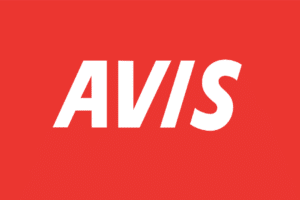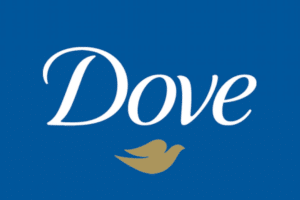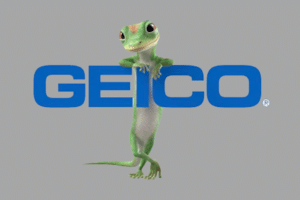Words to Sales: B2C Copywriters Drive Consumer Engagement
Trying to connect with your customers but feeling like you’re just not hitting the mark? There’s a secret weapon at your disposal — B2C copywriters.
In this article, we will dive deeper and introduce you to the power of persuasive words, guiding you on how to utilize B2C copywriting strategies that ignite consumer engagement and drive sales.
Let’s dive in — there’s a story waiting to be told!
Key Takeaways
- B2C copywriters use a specific tone and language to connect directly with consumers, addressing their needs, desires, and pain points.
- They tailor content to resonate with a specific target audience, understanding their pain points and presenting solutions through compelling product content.
- B2C copywriting drives consumer engagement through emotional appeal, storytelling, personalization, and visual appeal.

Understanding the Differences Between B2B and B2C Copywriters
B2B and B2C copywriting differ in tone, language used, target audience, complexity of products, customer readiness, and number of readers. B2B or B2C copywriters are in high demand. Why? Because every business wants an advantage in the marketplace and help with the purchase decision of those looking to purchase their service or product. B2C customers are some of the hardest to convince due to all of the choices that buyers have. This type of copywriting takes skill and experience, which is why I feel it’s so important for you to understand the importance of finding the right person to fulfill your copywriting needs.
Related Article: The Power of Words: Your Business Needs a Website Copywriter
Marketing and copywriting are things that a brand cannot be lazy and complacent with. Below will help explain the differences between B2B vs B2C copywriters.
Tone and language used
B2C copywriters use a specific tone and language designed to connect directly with consumers. This involves crafting content for B2C brands that speak directly to the potential customer, addressing their needs, desires, and pain points in an engaging and relatable manner.
The language used when writing copy is usually simple, clear, and free from complex industry jargon that could deter or confuse the reader. B2C copywriting leverages the power of emotion through its tone — often friendly, conversational, or even humorous — to inspire action, such as making a purchase or signing up for a newsletter.
A successful sales copy manages to strike a balance between being persuasive without appearing pushy. It inspires trust and creates connections between brand and consumer while also positioning products or services as solutions to customers’ problems.
Target audience
Successful B2C copywriters strategically tailor their content to resonate with a specific audience. They keenly understand that the right words can engage, inspire, and excite potential customers. One of the key roles of copywriting is to generate leads and then turn those leads into customers.
The target audience often varies depending on the product or service being marketed. For instance, technology gadgets might cater to young tech-savvy adults, while high-end skincare products may appeal more to affluent middle-aged women.
Related Article: Hiring a B2B Copywriter Is the Ultimate Business Growth Hack
Understanding your target audience’s pain points is an essential factor in crafting persuasive copywriting strategies. B2C writers zero in on these concerns and present solutions through compelling product content.
This kind of focused writing encourages consumers to take action, whether it be making a purchase or subscribing to a newsletter, leading to increased sales and revenue for businesses.
Complexity of products
In business-to-consumer copywriting, B2C copywriters typically handle products with less technical complexity than B2B counterparts. They focus on presenting a product or service in an engaging and attractive manner without delving too deeply into the intricacies.
The idea is to make a potential customer relate to the usefulness of the product rather than overwhelm them with comprehensive specifications or details. It’s crucial that website content for these products resonates with the target audience, addressing their pain points effectively and enticingly.
Understanding this balance can immensely transform marketing campaigns, leading to increased conversions and sales.
Customer readiness
Customer readiness is an essential factor to consider in B2C copywriting. It refers to how prepared or inclined potential customers are to make a purchase. When crafting your copy, it’s crucial to keep in mind that your target audience may not be fully aware of their needs or the benefits of your product or service.
Therefore, you need to provide them with information and persuasive arguments that will move them closer to taking action. By addressing their pain points and showcasing the value of what you’re offering, you can increase customer readiness and drive engagement toward making a purchase.
Engaging content that resonates with consumers and builds trust is vital in influencing their buying decisions.
Number of readers
B2C copywriting is all about reaching a large number of readers and potential customers. With blogs, landing pages, and social media platforms at your disposal, you have the opportunity to engage with a wide audience.
Related Article: Emails That Sell — How an Email Copywriter Drives Conversions
By crafting compelling and persuasive content that addresses their needs and pain points, you can make an impact on a significant number of people who may be interested in your product or service.
Your goal is to create content that resonates with your B2C audience and drives them to take action, whether it’s making a purchase or signing up for more information. Utilize the power of effective copywriting strategies to capture the attention of potential customers and guide them toward making buying decisions.
How B2C Copywriting Strategies Drive Consumer Engagement
B2C copywriting drives consumer engagement through emotional appeal, storytelling, personalization, and visual appeal.
Emotional appeal
B2C copywriting understands the power of emotions in driving consumer engagement. By tapping into the feelings and desires of potential customers, businesses can create compelling content that resonates on a personal level.
Emotional appeal allows copywriters to connect with their audience by highlighting how a product or service can solve their problems or fulfill their needs. It evokes empathy, creates a sense of urgency, and motivates consumers to take action.
Through carefully crafted language and storytelling techniques, B2C copywriters can inspire emotional responses that lead to increased brand loyalty and ultimately drive sales.
Storytelling
Storytelling is a powerful tool in B2C copywriting that can captivate and engage consumers on an emotional level. By weaving narratives into your content, you create a personal connection with your audience, making them more likely to relate to your brand.
Stories have the ability to evoke emotions, spark curiosity, and leave a lasting impact on readers. When incorporating storytelling into your B2C copywriting, focus on creating compelling characters, building suspense or excitement, and highlighting the benefits of your product or service through real-life examples.
Remember, stories are not just about entertainment, they serve as a persuasive tool that can drive consumer engagement and ultimately lead to increased sales.
Personalization
B2C copywriting thrives on personalization, making each interaction with potential customers feel tailored and unique. By addressing individual needs and preferences, businesses can establish a deeper connection with their target audience.
Related Article: Marketing with Purpose — Effective Content Marketing Services
Personalized content communicates that the brand understands its consumers and can offer solutions that genuinely resonate with them. Whether it’s using their name in an email campaign or recommending products based on their purchase history, personalization creates a sense of relevance and increases the likelihood of engagement and sales.
Integrate personalization into your B2C copywriting strategies to provide a more personalized experience for your customers.
Visual appeal
Visual appeal is a crucial aspect of B2C copywriting that can significantly impact consumer engagement. When it comes to marketing campaigns and website content, incorporating eye-catching visual elements can help capture the attention of potential customers and make your brand stand out.
By using high-quality images, videos, infographics, and other visually appealing content, you can create an immersive experience for your audience and effectively convey the value of your products or services.
Visuals have the power to evoke emotions, tell stories, and enhance the overall message of your copywriting. Remember, in today’s digital age, where visual content dominates social media platforms, having strong visual appeal in your B2C writing is essential to grab attention and motivate consumers to take action.
Incorporating visuals also allows you to showcase real-life examples through customer testimonials. Including images or videos of satisfied customers experiencing the benefits of your product or service adds credibility and trustworthiness to your copywriting efforts.
This form of social proof reinforces the positive aspects of what you’re selling while connecting with potential customers on a more personal level.
Best Practices for B2C Copywriters
Craft compelling headlines, build personal connections, and incorporate visual elements to engage potential customers and drive conversions. Discover proven strategies that will help your B2C copy stand out from the competition.
Read more for actionable tips on how to make your content resonate with your target audience and compel them to take action.
Pinpointing the reader’s problem
To drive consumer engagement, B2C copywriters need to pinpoint the reader’s problem. By identifying and addressing the pain points of potential customers, you can create content that resonates with them on a personal level.
Whether it’s through compelling storytelling or highlighting how your product or service solves their specific needs, understanding the reader’s problem allows you to craft targeted messages that grab their attention and compel them to take action.
This customer-centric approach builds trust and increases the likelihood that they will make a purchase from your business.
Building a personal connection
Building a personal connection with your audience is critical to driving consumer engagement through B2C copywriting. Here are some strategies to help you establish that connection:
- Understand your target audience: Research and analyze your target market to gain insights into their needs, preferences, and desires. This understanding will enable you to tailor your copy specifically to them.
- Use relatable language: Speak their language by using conversational and relatable tone and vocabulary. Avoid complex jargon or technical terms that might alienate or confuse them.
- Address their pain points: Identify the challenges, problems, or concerns that your audience may have related to your product or service. Highlight how your offering can solve these issues and make their lives better.
- Be authentic and transparent: Build trust by being honest, genuine, and transparent in your copywriting. Consumers appreciate businesses that are upfront about their values, mission, and any limitations.
- Show empathy: Demonstrate empathy for your audience’s experiences and emotions related to the problem they’re facing. This will make them feel understood and cared for.
- Incorporate storytelling: Narratives engage emotions and create connections with readers. Share stories that resonate with your target audience, showcasing how your product or service has positively impacted others like them.
- Utilize customer testimonials: Customer testimonials provide social proof of the effectiveness of your offering while building trust among potential customers. Include real-life experiences and success stories in your copy.
- Personalize the experience: Tailor your copywriting to individual consumers whenever possible — using their names in emails or customizing content based on previous interactions — shows that you value them as individuals.
Crafting attention-grabbing headlines
Craft attention-grabbing headlines for maximum impact:
- Choose powerful and compelling words that capture the reader’s attention.
- Use numbers or statistics to make your headline more specific and intriguing.
- Pose a question that piques curiosity and encourages readers to click.
- Incorporate relevant keywords to improve search engine visibility.
- Highlight the benefits or solutions your product or service offers.
- Create a sense of urgency with words like “now” or “limited-time offer.”
- Keep headlines concise and easy to understand, avoiding jargon or complex language.
- Experiment with different headline styles, such as lists, how-tos, or thought-provoking statements.
- Test your headlines to see which ones generate the most engagement and adjust accordingly.
Avoiding industry jargon
In the world of B2C copywriting, it’s important to speak your audience’s language. That means avoiding industry jargon and using simple, clear terms that everyone can understand. Instead of bombarding potential customers with complex terminology, focus on connecting with them on a personal level.

By using relatable language, you can build trust and make your message more accessible. Remember, the goal is to engage consumers and inspire them to take action, so keep things straightforward and relatable in your copywriting efforts.
Incorporating visual elements
Incorporating visual elements is a highly effective strategy in B2C copywriting. By using eye-catching images, videos, and graphics, you can capture the attention of your audience and make your content more engaging.
Visuals not only break up long blocks of text but also help to convey information quickly and effectively. They can evoke emotions, tell a story, or showcase the benefits of your product or service in a visually appealing way.
Whether it’s through infographics, product photography, or dynamic videos, incorporating visual elements into your B2C copy will enhance consumer engagement and increase the likelihood of conversions.
Examples of Successful B2C Writing
Experience the power of effective B2C copywriting with these real-life examples that will inspire and motivate your marketing campaigns.

Avis
Avis is a prime example of successful B2C copywriting that drives consumer engagement. By understanding the needs and desires of their audience, Avis has effectively crafted persuasive messages that resonate with potential customers.
Their copywriting strategy addresses pain points and builds trust, allowing consumers to feel confident in their decision to rent a car from Avis. Through compelling product content and customer testimonials, Avis creates an experience that inspires and excites consumers, ultimately driving sales and enhancing customer engagement.

Nike
Nike is a prime example of successful B2C copywriting. Their marketing campaigns are known for their emotional appeal and powerful storytelling to help entice people to buy a pair of shoes. Through their copy, Nike creates a personal connection with their audience, inspiring them to take action and make a purchase.
They understand the importance of addressing the pain points of consumers and building trust through their content. Nike also incorporates visual elements into their messaging, enhancing the overall impact of their brand.
As a business owner or marketer, studying Nike’s copywriting strategies can provide valuable insights into driving consumer engagement and boosting sales.

Dove
Dove is a prime example of successful B2C copywriting that drives consumer engagement. Their powerful marketing campaigns have resonated with a wide audience, positioning them as a trusted brand in the beauty industry.
Dove’s copywriting strategy focuses on addressing the pain points of consumers and building trust through emotional appeal and storytelling. By personalizing their messaging and incorporating visual elements, they capture the attention of potential customers and inspire them to take action.
Through their compelling content, Dove effectively showcases the value and benefits of their products, ultimately driving sales and enhancing customer engagement.

Geico
Geico is a prime example of successful B2C copywriting. Their ads are memorable and highly engaging, capturing the attention of their target audience with humor and creativity. Geico understands the importance of emotional appeal in driving consumer engagement, and they use storytelling techniques to connect with potential customers on a personal level.
By incorporating visual elements into their advertisements, such as their famous gecko mascot or catchy slogans, Geico effectively grabs the viewer’s attention and leaves a lasting impression.
With their compelling copywriting strategies, Geico has managed to position themselves as a trusted brand that resonates with consumers and drives sales.
Your Business Can Benefit from B2C Copywriters
B2C copywriters play a crucial role in driving consumer engagement and, ultimately, sales. By utilizing emotional appeal, storytelling, personalization, and visual elements, they create content that resonates with potential customers.
Related Article: Email Inbox Zero is Dumb — Try This Instead!
With the right strategies and techniques, B2C copywriting can effectively address pain points and build trust to inspire consumers to take action and make a purchase. So, if you’re writing for a B2C audience, remember the power of words in driving revenue and connecting with your customers.
FAQs
Business-to-consumer (B2C) content marketing is a strategy used by companies to engage consumers through meaningful and relevant content, driving them to purchase products or services.
When you’re writing for B2C marketing, you’ll want to focus more on creating a personal connection with your audience. Your content needs should be geared towards the consumer’s direct benefit, making it different from general copywriting.
To create successful B2C copywriting, one must understand their audience well, as if they are not just writing to a group but instead to an individual consumer. Therefore, being a good copywriter requires skill and understanding of your consumer base.
A “call-to-action” is key in any piece of content because it directs consumers onto the next steps — ideally leading them closer towards choosing to purchase your product or service.
By emphasizing on high-quality and personalized content that speaks directly to your customers’ needs, incorporating effective call-to-actions within these materials will help drive engagement and ultimately increase sales.


*Disclosure: This article may contain affiliate links or ads, which means we earn a small commission at no extra cost to you if you make a purchase through these links. These commissions help support the operation and maintenance of our website, allowing us to continue producing free valuable content. Your support is genuinely appreciated, whether you choose to use our links or not. Thank you for being a part of our community and enjoying our content.
PLEASE CONSIDER SHARING THIS ON YOUR SOCIAL MEDIA TO HELP OTHERS LEARN MORE ABOUT THIS TOPIC. SIMPLY CLICK BELOW!

